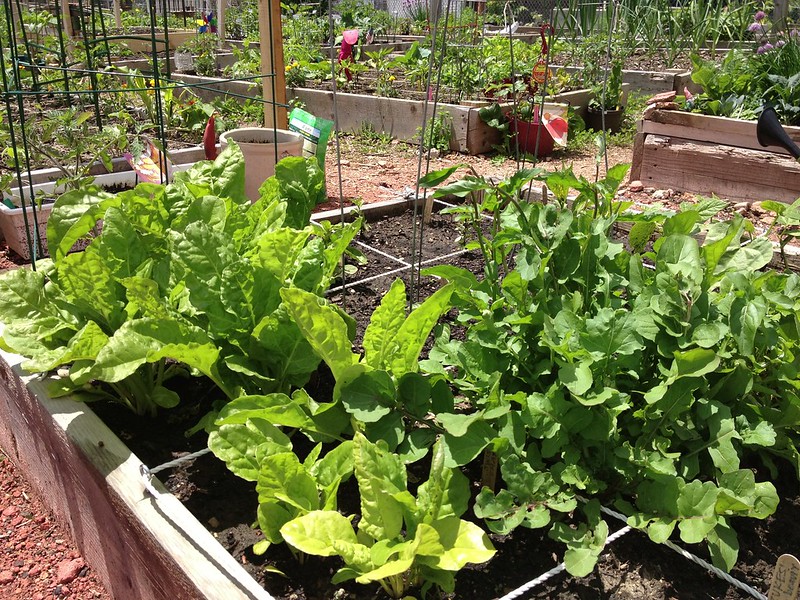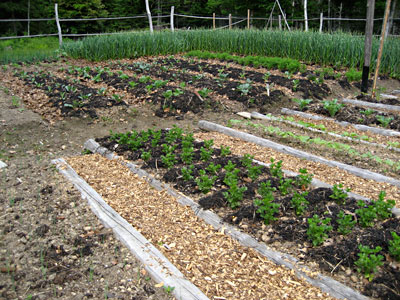Learn Just How to Cultivate a Growing Horticulture Atmosphere for All Skill Levels
Developing a flourishing garden is a multifaceted endeavor that can be accepted by people at any skill degree. By taking a look at crucial elements such as dirt wellness, proper plant choice, and seasonal treatment regimens, one can develop a sustainable horticulture technique that generates enjoyable outcomes. Recognizing just how to examine and enhance your yard area lays the foundation for success. Yet, the intricacies of carrying out these principles usually existing difficulties that can deter also the most enthusiastic amateur. What methods can be employed to get over these barriers and foster an absolutely growing atmosphere?
Comprehending Your Garden Space
In the realm of horticulture, comprehending your yard space is extremely important to cultivating a thriving landscape (Homestead Gardening). The very first step in this venture includes analyzing the particular attributes of your story. Factors such as dirt structure, sunshine exposure, and water drainage play essential roles in identifying the viability of your yard for different types of plants
Begin by carrying out a dirt examination to analyze pH degrees and nutrient content, which will certainly educate any required modifications. Furthermore, observe exactly how much sunshine your room receives throughout the day. Various plants have varying light needs; some prosper in full sunlight, while others like partial or complete color.

Lastly, review the offered area and plan accordingly. This consists of considering plant elevations and infected make sure sufficient area for growth without congestion. By gaining an extensive understanding of your yard space, you established the structure for a successful horticulture experience.
Picking the Right Plants
Selecting the right plants for your garden needs mindful factor to consider of numerous factors, including climate, soil problems, and personal choices. Begin by analyzing your regional climate, as certain plants grow specifically temperature level ranges and weather patterns. Tropical plants may not endure in cooler regions, while sturdy perennials can stand up to extreme winters.

Consider your personal preferences, including aesthetic allure and maintenance degrees. Decide whether you like vivid flowers, lavish foliage, or edible plants. In addition, consider the time and initiative you are prepared to buy plant treatment, as some varieties require even more interest than others.
Finally, think of the garden's layout and light direct exposure. Sunshine patterns throughout the day will influence your choices-- some plants need full sunlight, while others prosper in shade. By attentively evaluating these elements, you can create a unified and productive yard customized to your atmosphere and tastes.
Necessary Gardening Devices
A well-appointed garden enthusiast can considerably enhance their gardening next experience and outcomes. Necessary gardening devices are fundamental to cultivating a successful yard, regardless of skill level. A tough spade is important for excavating and turning soil, while a trowel enables for specific growing and transplanting of smaller sized plants.
Pruning shears are important for preserving plant wellness by removing dead or thick branches, advertising far better air circulation and development. In addition, a hand rake serves for clearing debris and freshening the soil, guaranteeing optimal conditions for plant roots.
Gardening gloves safeguard hands from thorns, chemicals, and blisters, making them a crucial accessory. A watering can or tube with an adjustable nozzle makes certain that plants get appropriate moisture without overwatering.
Last but not least, think about buying a tough wheelbarrow for transporting dirt, plants, and tools around the yard effectively. By putting together a high quality toolkit that consists of these essential things, gardeners can tackle numerous tasks with self-confidence and convenience, leading the method for a prospering horticulture atmosphere. Keep in mind, the right tools not just improve performance yet also improve the total satisfaction of the horticulture procedure.
Dirt Prep Work and Maintenance
Quality dirt is the foundation of an effective yard, making appropriate preparation and maintenance crucial for healthy plant development. The primary step in dirt preparation includes testing its pH and nutrient levels. This can be attained through dirt screening kits available at gardening facilities or via expert solutions. Based upon the examination results, amendments can be made to optimize dirt problems for particular plant demands.
Including natural matter, such as compost or well-rotted manure, is important for boosting dirt framework and fertility. This not just improves nutrient schedule yet also advertises helpful microbial task. In addition, proper drain is crucial; hefty clay dirts may require the enhancement of sand or perlite to improve aeration.
Normal maintenance of dirt health includes mulching, which preserves dampness and reduces weeds. Turning crops yearly aids protect against nutrient deficiency and decreases insect and condition threats. It is also essential to prevent over-tilling, which can interrupt soil framework and injury advantageous microorganisms.
Ultimately, a constant dedication to soil preparation and maintenance will certainly bring about a flourishing yard, making sure that plants obtain the essential nutrients they need for durable growth and performance.
Seasonal Treatment and Administration

In springtime, focus on planting new seeds and seedlings, while additionally carrying out soil examinations to change nutrient shortages. Frequently look for insects and illness, as these can multiply with the warming climate. Summertime demands consistent watering and mulching to preserve dampness, along with pruning for better air blood circulation.
As autumn techniques, it's time to prepare the garden for inactivity. This includes collecting crops, cleaning up particles, and applying visit the website a layer of mulch to shield plant origins from frost. Consider planting cover plants to improve the dirt during the winter season.
Inspect structures like greenhouses for damage and guarantee correct insulation for delicate plants. By adapting your horticulture practices to the seasonal cycles, you can foster a prospering setting that sustains plant wellness year-round.
Final Thought
Finally, cultivating an effective garden needs a comprehensive understanding of necessary concepts such as soil make-up, sunshine direct exposure, and ideal plant option. Executing reliable dirt preparation and maintenance strategies, in addition to using the right tools, cultivates an optimum growing atmosphere. Regular seasonal care and management techniques even more enhance plant health website link and efficiency. By sticking to these foundational guidelines, individuals in any way ability degrees can attain a prospering garden that adds to both aesthetic enjoyment and environmental sustainability.
Selecting the right plants for your yard requires mindful consideration of various aspects, consisting of climate, soil conditions, and personal choices. Conduct a soil examination to determine pH degrees and nutrient web content, which will guide you in selecting plants that will certainly prosper in your yard.Finally, think about investing in a sturdy wheelbarrow for carrying soil, plants, and devices around the garden efficiently.Quality dirt is the foundation of an effective yard, making appropriate preparation and maintenance critical for healthy plant development. Homestead Gardening.In verdict, cultivating a successful garden calls for a thorough understanding of necessary principles such as dirt structure, sunshine direct exposure, and suitable plant choice